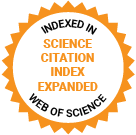Journal of Medical Internet Research
The leading peer-reviewed journal for digital medicine and health and health care in the internet age.
Editor-in-Chief:
Gunther Eysenbach, MD, MPH, FACMI, Founding Editor and Publisher; Adjunct Professor, School of Health Information Science, University of Victoria, Canada
Impact Factor 6.0 CiteScore 11.7
Recent Articles



Digital health (DH) provides a valuable opportunity for accessible and efficient palliative care delivery. In recent years, an expanding body of systematic reviews and meta-analyses has examined DH-based interventions in palliative care. However, their conclusions regarding effects remain inconsistent, often constrained by methodological limitations and the variable quality of primary studies, making it difficult to form a coherent appraisal.

People who sustain a concussion and live in remote areas can experience challenges to accessing specialized assessments. In these cases, virtual approaches to assessment are of value. There is limited information on important psychometric properties of physical assessment measures used to evaluate people post-concussion virtually.

Artificial intelligence (AI) is being rolled out across the UK National Health Service (NHS) to improve efficiency; yet, its carbon footprint is largely invisible within mandatory Green Plan reporting. This work shows where NHS carbon reporting omits AI-related emissions and proposes feasible accounting and procurement measures that allow trusts to assess whether AI adoption advances or undermines net zero. A review of NHS sustainability guidance, the Department for Environment, Food & Rural Affairs conversion factors, and recent evidence on AI energy use shows that current Scopes 1-3 accounting omits substantial emissions at 3 points. First, a lack of granularity provides averages that can obscure the extreme energy intensity of certain AI workloads. Second, life-cycle emissions from specialized hardware (eg, graphics processing units) are often excluded unless trusts own the equipment, ignoring upstream manufacturing impacts. Third, widespread use of unprocured generative AI tools is unmeasured; extrapolating general practice survey data suggests that ChatGPT queries alone could release ≈ 349t CO₂e per year in primary care. To close these gaps, we propose three potential ways to help reduce these reporting gaps: (1) AI-specific carbon disclosure clauses in vendor contracts, (2) inclusion of cradle-to-grave emission factors for AI hardware in Scope 3 reporting, and (3) lightweight monitoring of external AI traffic (while recognizing potential ethical issues with this). Implementing these measures would give health care leaders a more accurate baseline against which to judge whether AI supports or undermines the NHS net-zero target.

Sexual minority youth, particularly sexual minority youth of color, report elevated mental health challenges and persistent barriers to care. The COVID-19 pandemic exacerbated these disparities and catalyzed a shift toward digital health and digital mental health services. This rapid transition has made it challenging to understand digital exclusion and the digital divide.

Netnography is an emergent qualitative methodology adapted from ethnography to explore interactions and cultural dynamics within digital environments. Although it is increasingly used in health care research, its application remains inconsistent, particularly regarding methodological transparency and ethical reporting. Given netnography’s growing use in health care and the limited guidance on its application, a timely review of how it is defined and operationalized in the literature is warranted.

Attention-deficit/hyperactivity disorder (ADHD) is a common neurodevelopmental disorder with symptoms of inattention, hyperactivity, and impulsivity, which can significantly impact social functioning. Traditional ADHD diagnostic methods rely on subjective behavioral ratings and neuropsychological tests, but these tools may have limitations, including biases and restricted ecological validity.

The adoption of new technologies and data modernization approaches in public health aims to enhance the use of health data to inform decision-making and improve population health. However, public health departments struggle with legacy systems, siloed data, and privacy concerns, hampering new technology adoption and data sharing with stakeholders. This paper maps how to address these shortcomings by identifying data modernization challenges, initiatives, and progress.

Temporomandibular disorders (TMDs) are common chronic musculoskeletal conditions associated with pain, jaw dysfunction, and impaired quality of life and influenced by behavioral and psychological factors. Digital therapeutics (DTx) may improve access to standardized behavioral interventions, but their clinical efficacy for TMD has not been adequately established.
Preprints Open for Peer-Review
Open Peer Review Period:
-
Open Peer Review Period:
-


















